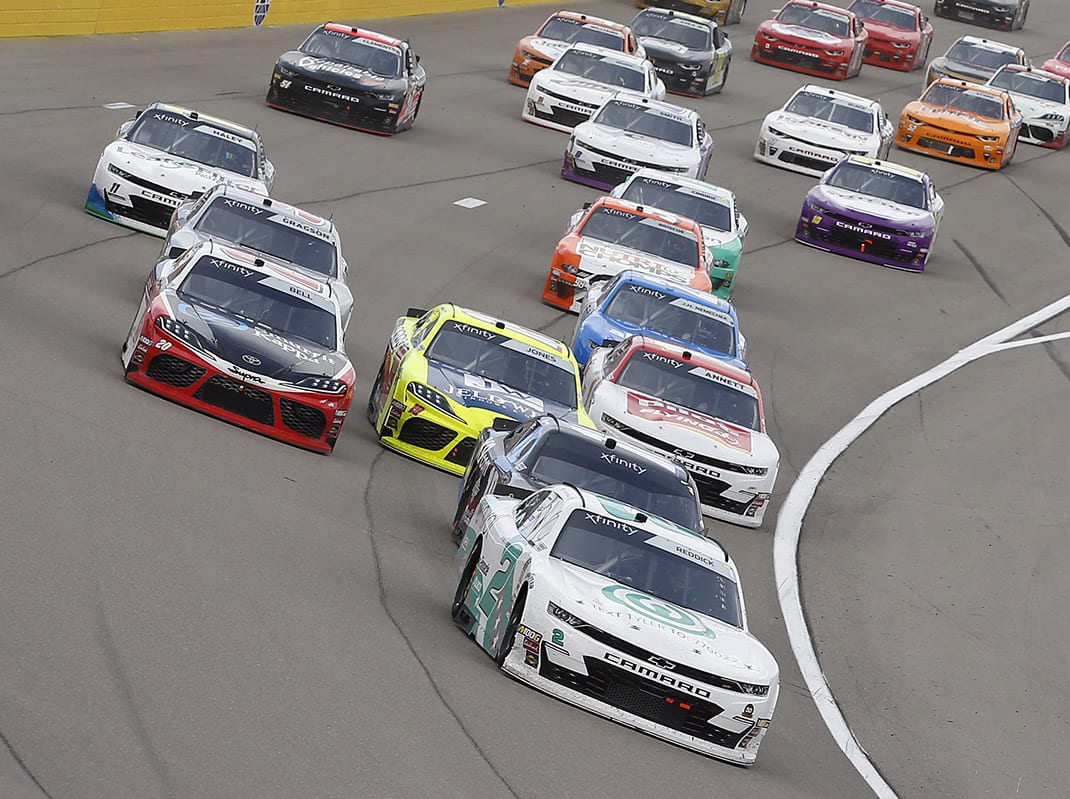Sponsorship woes cost the Truck Series two top-flight teams in 2018 — Brad Keselowski Racing and Red Horse Racing. Chip Ganassi Racing pulled its No. 42 Chevrolet out of the Xfinity Series this year for the same reason.
A staple of the series for decades, Roush Fenway Racing has also withdrawn from the series.
Despite that, the NXS remains solid in terms of teams. JRM has four full-time Chevrolets, three running for the series drivers’ title and the fourth running for the owners’ championship with a quintet of drivers behind the wheel. JGR has two full-time Toyotas with Brandon Jones and Bell and a third Supra with multiple drivers behind the wheel. Stewart-Haas Racing fields full-time Fords for Cole Custer and Chase Briscoe.
Other teams, such as JD Motorsports, have multiple cars in the lineup each week and several owners will run as many races as possible depending on sponsorship.
The television numbers from the Xfinity Series are respectable, given the sheer amount of programming available at any point in a weekend. Averaging 1.1 million viewers per broadcast, it enables TV providers FOX Sports and NBC to package it along with their Cup Series product. The fact that the majority of NXS races take place as companion events with the Cup Series allows more of an opportunity to take care of sponsors — and woo potential sponsors— than it would if the schedule was like it was in the beginnings of the series.

Even though Cup Series teams cannot earn points for the playoffs if they race in the NXS, the drivers still do, and that helps with sponsorship in the long run. Discount Tire, for instance, transitioned from the NXS to the Cup Series for Penske, as did DC Solar for Ganassi, though that did not have the impact either side was hoping to see.
The fact that NXS races a different car than the Cup Series is helpful, too. The composite bodies mandated by NASCAR for the Xfinity Series are a step toward evening the playing field, as well. With a modest 100-pound weight break over the steel bodies, it allows lesser-funded teams to compete on a more even keel with those teams who have Cup Series big brothers.
The technology that is inside the Cup Series garage has not, for the most part, made it to the Xfinity side. They run different bodies with fuel-injected engines rather than carbureted and have more robust electronic systems. The NXS cars are more straightforward mechanically. The teams are limited in the number of tires they have per weekend and the number of pit crewmen they can travel to the race each weekend.
That’s all in an effort by NASCAR to address the costs associated with racing at the NXS level. In days past, owners like Gary Bechtel and Leo Jackson used the Busch Grand National Series to satisfy their desire to race on the weekends. The budgets then made that possible. The budgets today — $5 to $6 million — are not so easy to maintain out of one’s pocket.
Then again, there were not so many races west of the Mississippi, and some stand-alone races on off Cup Series weekends made sense financially.
From its beginnings as a regional touring series to today’s role as the Saturday show for the Cup Series, the NASCAR Xfinity Series is thriving in some ways and facing the same limitations as its bigger brother in others. The development of feeder systems — late models to ARCA to trucks to NXS and finally to Cup — all but guarantees the No. 2 series in NASCAR’s feeder system will continue to bring notoriety and fresh talent to the fore.
Bringing drivers into one end of the pipeline and offering them a clear ladder to advance has been done for decades in European racing. It has been part of the NASCAR landscape in the past, as well. The Xfinity Series is the next-to-top rung on that ladder, and its teams — GMS Racing and JR Motorsports chief among them with the formation of their Drivers Edge Development program — are jumping into the process in a big way.
That will likely be the key to the continued survival and success of the NASCAR Xfinity Series.
